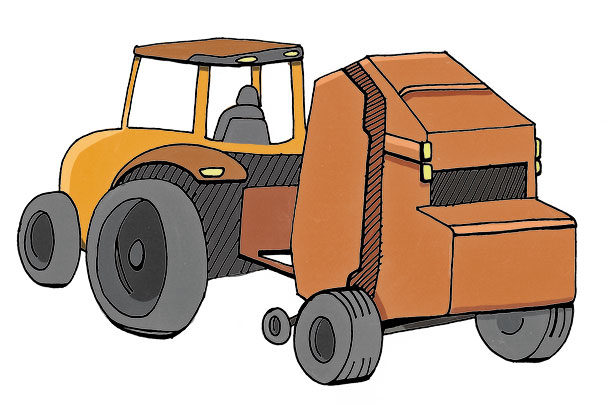I mentioned three at that time but am adding another option in this article.
Group buying and equipment sharing
Buying in groups, also called buying clubs, joint ventures or alliances, are concepts that continue to gain traction in farming. It’s where several farmers in the same area go together to purchase equipment that is bigger and more technologically current than they could afford on an operation not sized to fully utilize or afford the equipment they are considering.
By sharing its use on the number of acres the equipment is actually built to handle, they are able to spread overhead and drive down per-acre costs. Often times, purchases are made under a separate operating LLC to take advantage of tax savings, liability protection or access to capital.
The same concept can also be applied to specialized equipment used only occasionally. For example, six dairymen went together to buy a scissor lift, which they move around among the group to work on lights and fans in rotary parlors.
Another example involves farmers in different parts of the country jointly owning equipment that can be used over a longer period of time and more acres because of seasonality differences and maturity dates on different crops.
Collaborative farming
This is just taking the joint buying and sharing arrangements one step further. Participants retain ownership of their own land, but generally form a joint operating entity. For this to work, it requires common values, management philosophy, open communication and trust.
But it can allow people to do what they do best, and create an operation big enough to employ specialized skills none of the members possess or their individual operations could afford. It can also create a succession plan for an older farmer who wants to retire before too long, or maybe just wants to work seasonally and doesn’t have an interested or capable successor.
It also allows a young producer to work under the mentorship of experienced operators and to enjoy the benefits of economies of scale without having to become overly leveraged.
Peer advisory groups
Another business concept that can be used to make smarter purchasing decisions is using peer advisory groups. The groups typically consist of eight to 12 non-competing farmers who are good at what they do, created for the purpose of sharing their experiences and bringing different experiences and vantage points.
It’s like creating your own board but without the governing authority or fiduciary liability. To keep discussions on track, they usually use an outside facilitator.
Technology advisory groups, in particular, are becoming popular as ways for farmers to learn about new technology. Members get together to talk about new technologies they have bought or are considering buying.
As farms get bigger and more sophisticated, no one is an expert on everything, particularly when you throw in information technology, as well as operating equipment.
Members need to be hand-selected based on aptitudes, interests and mutual trust. Often times, meetings will include operators bringing with them the person in their business with responsibility for the technology being discussed.
If one person learns about a technology or how it can be adapted to different situations and then passes the information on to the groups, the learning curve is accelerated.
The value is in getting different points of view. Am I the only one having this problem ... or is there a different way I could approach it?
Process management and improvement
Process management is a business concept that can and should be used in farming. Each product or process is evaluated based on its ability to streamline an operation, increase production, reduce variability, improve quality or save time. It is the same concept used in industrial engineering – although referred to using different names such as total quality management, Six Sigma, lean manufacturing or balanced score-carding.
Processing management begins with process mapping, then developing standard operating procedures defining what is to be done, how it is to be done and who is responsible for what.
Once a process is outlined, you can look for ways to make it more efficient by combining or cutting out steps or using technology to replace some of the manual steps. Jim Collins, in his book Good to Great, says the best companies spend as much time analyzing what they need to stop doing as they do evaluating new opportunities.
Process management isn’t just a one-time thing. Procedures must be continually updated as circumstances change and as new technologies become available that could eliminate steps, reduce time or improve quality.
Otherwise, the system can become like a labor union of government bureaucracy, where you become bound by your standard operating procedures. ![]()
ILLUSTRATION: By sharing its use on the number of acres the equipment is actually built to handle, they are able to spread overhead and drive down per-acre costs. Illustration by Corey Lewis.

-
Danny Klinefelter
- Professor and Extension Economist
- Texas A&M University
- Email Danny Klinefelter











